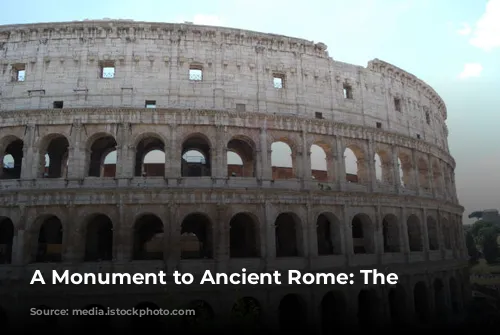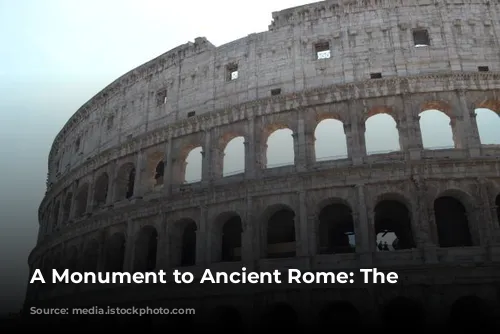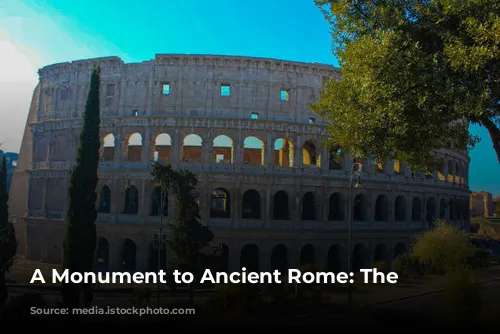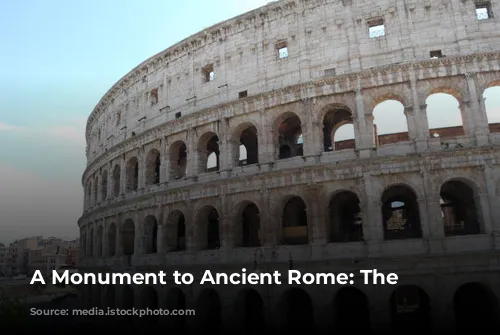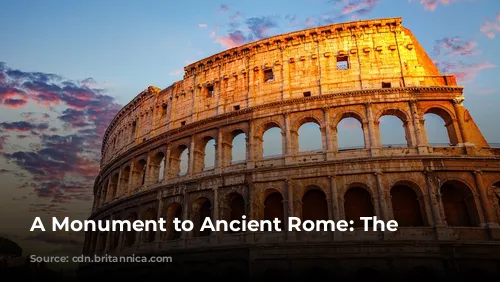The Colosseum is one of the few surviving structures from the Roman Empire that remains largely intact. It stands today as a testament to the architectural and engineering brilliance of ancient Rome. Not only is it a historical marvel, but it also plays a vital role in the modern world.
A Source of Revenue and Tourism
The Colosseum, along with the Roman Forum and Palatine Hill, generates over $63.3 million (€53.8 million) annually, making it the most popular tourist attraction in Italy. The Italian government benefits greatly from the tourism revenue generated by this remarkable site.
A Journey Through Time: From Arena to Fortress
The Colosseum’s history is a captivating journey through time. After the fall of the Western Roman Empire, the monument fell into disrepair. During the 12th century, the Frangipane and Annibaldi families used the arena as a fortress. In the late 15th century, Pope Alexander VI allowed the Colosseum to be used as a quarry. The Colosseum endured over a thousand years of neglect before state-funded restoration efforts began in the 1990s.
A Symbol of Imperial Power: The Colosseum’s Origins
The Colosseum was constructed as part of an imperial effort to revitalize Rome after the tumultuous year of the four emperors, 69 CE. The emperor Vespasian intended the Colosseum to be an entertainment venue, hosting gladiator fights, animal hunts, and even mock naval battles.
A Structure of Grand Proportions: The Colosseum’s Construction
Construction of the Colosseum began under Vespasian between 70 and 72 CE. The completed structure was dedicated in 80 CE by Titus, Vespasian’s son and successor. The Colosseum’s fourth story was added by Domitian in 82 CE. Notably, the arena was financed with plunder from Titus’s sack of Jerusalem in 70 CE, and Jewish slaves from Judaea were used to build it.

A Colossal Amphitheater: The Colosseum’s Design and Features
The Colosseum is an amphitheater, also known as the Flavian Amphitheatre, built in Rome during the reign of the Flavian emperors. It is an elliptical structure constructed of stone, concrete, and tuff. Standing four stories tall at its highest point, the Colosseum measures 620 by 513 feet (189 by 156 meters) and could accommodate up to 50,000 spectators. It was famously used for gladiatorial combat.

A Symbol of Imperial Power and Public Entertainment
The Colosseum is a testament to the power and grandeur of the Roman Empire. It was located just east of the Palatine Hill, on the grounds of Nero’s Golden House. The artificial lake that was the centerpiece of the palace was drained, and the Colosseum was built in its place, a decision that was both symbolic and practical. Vespasian, whose rise to power had humble beginnings, chose to replace the tyrannical emperor’s private lake with a public amphitheater that could entertain tens of thousands of Romans.
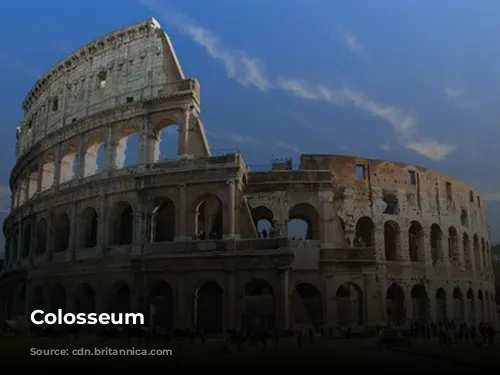
A Masterpiece of Roman Engineering
The Colosseum was officially dedicated in 80 CE by Titus with a ceremony that included 100 days of games. Domitian completed the structure in 82 CE by adding the uppermost story. Unlike earlier amphitheaters, which were often dug into hillsides for support, the Colosseum is a freestanding structure made of stone and concrete. It utilizes a complex system of barrel and groin vaults, and it measures 620 by 513 feet (189 by 156 meters) overall. The arena’s three lower stories are encircled by arcades framed by engaged columns in the Doric, Ionic, and Corinthian orders. The Colosseum’s rising arrangement of columns inspired the Renaissance codification known as the assemblage of orders. The main structural framework and facade are travertine, the secondary walls are volcanic tufa, and the inner bowl and arcade vaults are concrete.
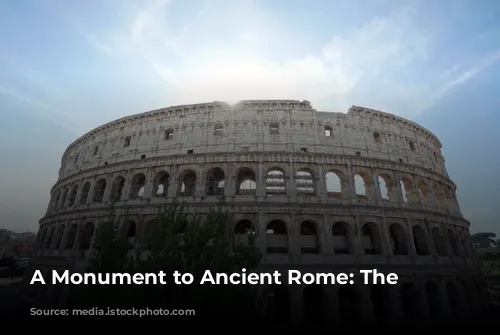
A Glimpse into Roman Entertainment: The Colosseum’s Events
The amphitheater could seat up to 50,000 spectators who were protected from the sun by a massive retractable velarium (awning). Masts extended from corbels built into the Colosseum’s top story, and hundreds of Roman sailors were required to operate the rigging that extended and retracted the velarium. The Colosseum witnessed thousands of hand-to-hand combats between gladiators, contests between men and animals, and even mock naval engagements. Although it’s uncertain whether the Colosseum was the site of early Christian martyrdom, its significance in Roman entertainment is undeniable.
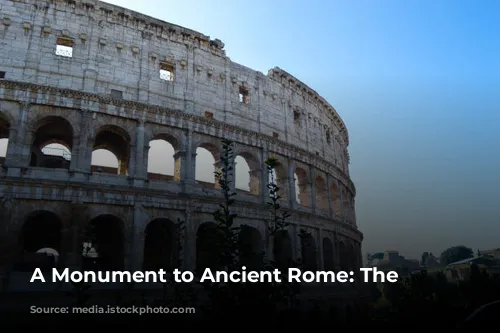
A Monument Reimagined: The Colosseum’s Legacy
During medieval times, the Colosseum was used as a church, followed by its use as a fortress by two prominent Roman families, the Frangipane and the Annibaldi. The Colosseum was damaged by lightning, earthquakes, and vandalism. The marble seats and decorative materials were removed, as the site was treated as little more than a quarry for over 1,000 years. Preservation efforts began in earnest in the 19th century, with notable contributions from Pius VIII. A restoration project was undertaken in the 1990s. The Colosseum continues to be one of Rome’s most popular tourist attractions, receiving nearly seven million visitors annually. Regularly changing exhibitions related to the culture of ancient Rome are displayed on the site.
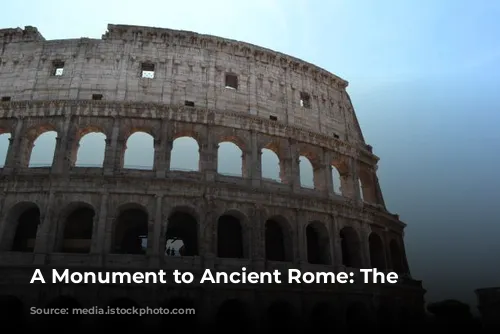
Conclusion: An enduring symbol of human ingenuity and resilience
The Colosseum stands as a powerful symbol of the Roman Empire’s greatness. Its legacy extends beyond its architectural and engineering brilliance. It represents the power of human ingenuity and the resilience of a civilization that once ruled the world. The Colosseum continues to inspire awe and wonder in millions of visitors, serving as a tangible link to the past and a reminder of the enduring power of human creativity.
